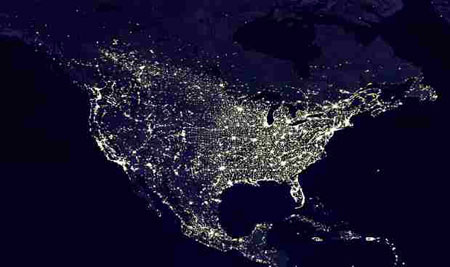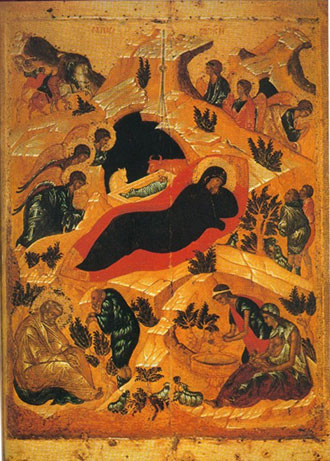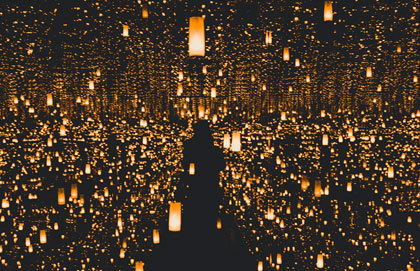The light shines in the darkness, and the darkness has not overcome it. This verse is often read at Christmas, and it means a great deal to those of us who live in the North where the December months are dark and cold.
The passage says that the "darkness" has not overcome the light. But I often think—as I do about many passages in Scripture—how difficult it is to understand the hope that comes from a light shining in the darkness. It's hard to understand because most of us don't experience darkness on a regular basis. North America has the infrastructure to ensure that we're flooded with light all the time.

This came home to me yesterday as my boys and I were talking about that passage in Scripture which speaks about God coming into the world. One of my sons asked if even the weak light of a candle could fill a room, or if its light would fade over the distance. So, I took them downstairs to our basement with one of our advent candles, shut off all the lights and lit the candles. The boys took turns running to the farthest corners of the room, and into nooks and crannies, to see if the light penetrated the darkness. It did, of course. Shouts of "I can still see it" confirmed that it was everywhere. Another of my sons noted that it wasn't a very strong light, though.
He's right. In A.D. 2012, a more appropriate verse might read "the light shines, but we didn't notice it among the street lights, car lights, Christmas lights, lights from police cars and fire trucks, lights from computers, TVs, DVDs, lights, lights, lights."
But this year especially I'm cognizant of the darkness of our world despite the bright lights. This year, like the year in which Christ was born, was a year in which too many innocents have been lost to war, famine, senseless killing, and even more senseless circumstance. There is a sense in which even the wash of light that marks our day to day can't penetrate the tombs of the dead, or the grieving hearts of mothers and fathers, or heal those struggling with sickness.
This is exactly the point of Christmas. This is why the most famous icon of Christ's birth features a grieving Mary, and Christ born into a cave—grave—carved out of Golgatha. The swaddling clothes are grave clothes, and the manger a coffin. It causes one to rethink the words to Silent Night. No crying he makes? The story of Scripture suggests otherwise.

But this is exactly the hope of Christmas. The Lord himself invades the grave, and like a candle in a dark room, casts light all around. In a world which is at the same time filled with sparkle and dark caves, the little child came so that true light can wake imprisoned dead, and come to make his blessings known, far as the curse is found. A very merry and very happy Christmas to all.






